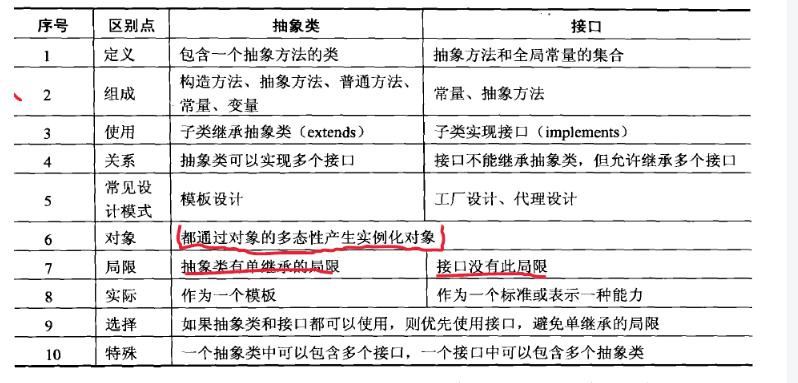第七周课程总结&实验报告(五)
实验四 类的继承
- 实验目的
- 理解抽象类与接口的使用;
- 了解包的作用,掌握包的设计方法。
- 实验要求
- 掌握使用抽象类的方法。
- 掌握使用系统接口的技术和创建自定义接口的方法。
- 了解 Java 系统包的结构。
- 掌握创建自定义包的方法。
- 实验内容
(一)抽象类的使用
- 设计一个类层次,定义一个抽象类--形状,其中包括有求形状的面积的抽象方法。 继承该抽象类定义三角型、矩形、圆。 分别创建一个三角形、矩形、圆存对象,将各类图形的面积输出。
注:三角形面积s=sqrt(p*(p-a)*(p-b)*(p-c)) 其中,a,b,c为三条边,p=(a+b+c)/2
2.编程技巧
(1) 抽象类定义的方法在具体类要实现;
(2) 使用抽象类的引用变量可引用子类的对象;
(3) 通过父类引用子类对象,通过该引用访问对象方法时实际用的是子类的方法。可将所有对象存入到父类定义的数组中。
实验代码:
abstract class Mianji { public abstract double area() ; }
class Tangle extends Mianji { double a; double b; double c; double p; public Tangle(double a,double b,double c) { this.a=a;this.b=b;this.c=c; } public double area() { double p=(a+b+c)/2; return Math.sqrt(p*(p-a)*(p-b)*(p-c)); } }
class Yuan extends Mianji { double r; public Yuan(double r) { this.r=r; } public double area() { return Math.PI*r*r; } }
public class Rectangle{ double width,height; public Rectangle (double w,double h){ width=w; height=h; } public double arae() { return width*height; } }
public class TEST { public static void main(String[] args) { Mianji m1=new Tangle(2,3,4); Mianji m2=new Yuan(5); Rectangle m3=new Rectangle(6,7); System.out.println(m1.area()); System.out.println(m2.area()); System.out.println(m3.arae()); } }
实验过程:定义抽像方法,子类继承抽象类
实验结果截图

(二)使用接口技术
1定义接口Shape,其中包括一个方法size(),设计“直线”、“圆”、类实现Shape接口。分别创建一个“直线”、“圆”对象,将各类图形的大小输出。
- 编程技巧
(1) 接口中定义的方法在实现接口的具体类中要重写实现;
(2) 利用接口类型的变量可引用实现该接口的类创建的对象。
实验过程
interface Shape { double size(); } abstract class Line implements Shape{ private double a,b,c,p; public Line( double a,double b,double c,double p) { this.a=a;this.b=b;this.c=c;this.p=p; } public double size() { return Math.sqrt(p*(p-a)*(p-b)*(p-c)); } public double getA() { return a; } public void setA(double a) { this.a = a; } public double getB() { return b; } public void setB(double b) { this.b = b; } public double getC() { return c; } public void setC(double c) { this.c = c; } public double getP() { return p; } public void setP(double p) { this.p = p; } }
public class implementes { private double r; public implementes(double r) { this.r=r; } public double size() { return 3.14*r*r; } } public class Count{ public static void main(String[] args) { Mianji m1=new Tangle(5,3,4); Mianji m2=new Yuan(5); Rectangle m3=new Rectangle(6,9); System.out.println(m1.area()); System.out.println(m2.area()); System.out.println(m3.arae()); } }
运行结果

四、实验过程
本周老师在课堂上主要讲了:
1.为抽象类与接口实例,
2.抽象类的实际应用——制定标准,
3.设计模式——代理设计,
4.Object类(toString()方法和equals方法)
对interface还应该多练习。
五、结论
抽象类和接口在系统设计上都是用的最多的

通过这次作业:我感到还有很多知识没学好,这次试验让我对super和this理解的更加透彻了:super与this不能同用,两者都不能不能出现在main方法中,不能在静态类中使用。好像进步的速度像乌龟那么慢,继续努力!




 浙公网安备 33010602011771号
浙公网安备 33010602011771号